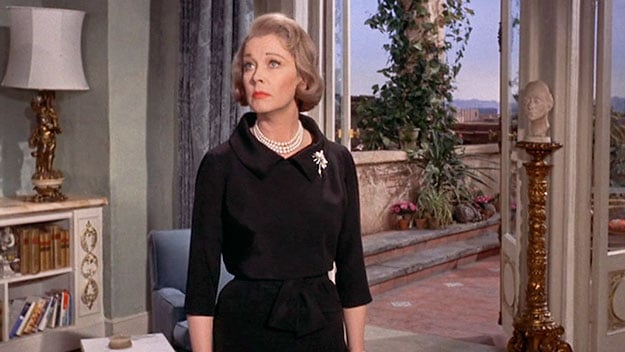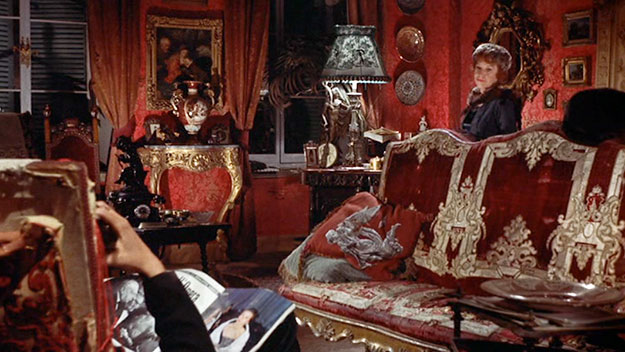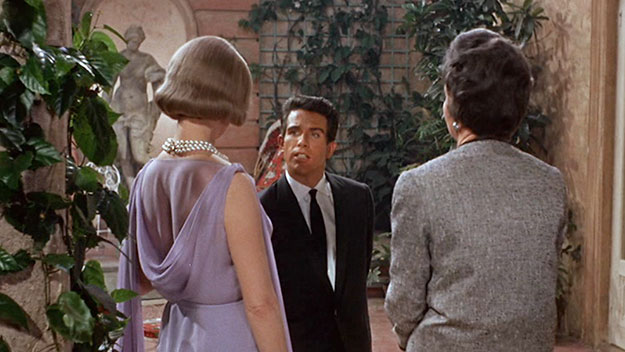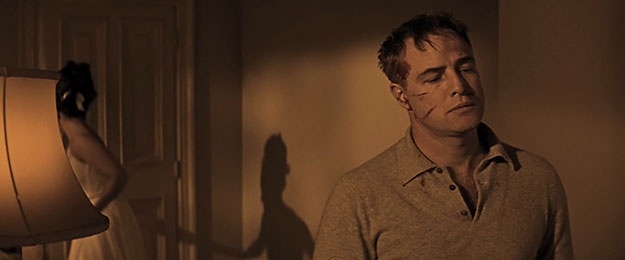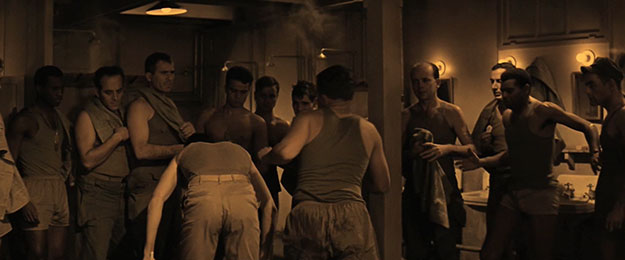The Roman Spring of Mrs. Stone While residing in Italy, like the protagonist of his only novella, The Roman Spring of Mrs. Stone, Tennessee Williams wrote a foreword to Carson McCullers’s Reflections in a Golden Eye. McCullers and Williams were friends, and her second novel broached a literary genre that, Williams wrote, could be lost on certain readers: “The question one hears most frequently about writers of the gothic school is this little classic: ‘Why do they write about such dreadful things?’” Renowned as Southern writers, both Williams and McCullers looked underneath the magnolia-scented gentility to explore steamy, sexually repressed, and entangled if not incestuous family relationships and bizarre scenarios. Evocative films have been made from their works, notably McCullers’s The Member of the Wedding (showcasing Julie Harris and a formidable but loving Ethel Waters) and The Roman Spring of Mrs. Stone, as well as the numerous, storied film and TV adaptations of Williams plays such as The Glass Menagerie, The Night of the Iguana, and A Streetcar Named Desire. The bond between the two writers seemed to express itself even in casting: Elia Kazan’s Streetcar adaptation features Vivien Leigh, who plays the eponymous Mrs. Stone, and Marlon Brando, who stars in Reflections in a Golden Eye. Despite their rich literary pedigrees, The Roman Spring of Mrs. Stone and Reflections in a Golden Eye ran into challenges as big-budget film adaptations. Neither did especially well upon their release, and they remain outliers in terms of reputation. Perhaps this is because the two movies are miscategorized as dramas, even of the lurid Southern gothic variety. These movies not only enter the territory of melodrama but approach the unspeakable borders of hysteria and terror. Their depictions of aging equate a natural human process with the absolute loss of beauty and of sexual appeal, not to mention imminent death. In these films the creeping specters of infertility, loneliness, and madness render any expression of desire as an opportunity for humiliation.
The Roman Spring of Mrs. Stone Could Roman Spring and Reflections then be more appropriately viewed as horror movies? The Roman Spring of Mrs. Stone might well qualify. But first, the story: Mrs. Karen Stone, an aging New York actress, is played by a gracefully middle-aged actress, Leigh, in unflattering wigs and chic, diaphanous Balmain ensembles. Beset by nasty reviews and remarks for daring to play Shakespearean ingénue roles at her advanced age, Mrs. Stone flees the city. Yet her wealthy, elderly husband suddenly dies on the flight to Rome. There, her trip to Italy becomes an extended stay, evoking two different kinds of horror. For one, Roman Spring anticipates the Italian giallo thrillers that would begin in 1963 with The Girl Who Knew Too Much, with their air of lurking malevolence and exotic settings. As in many of those films, The Roman Spring of Mrs. Stone concerns an American woman who is alone and at risk. For Mrs. Stone, the historic tourist sights of Rome like the Spanish Steps are not sunnily romantic but isolated and sinister; Italians instead of being friendly, warm, and voluble are, in true gothic mode, mysterious and remote. She becomes acquainted with a truly gothic set of people, a “wolf pack” led by a villainous madam (Lotte Lenya) managing a small tribe of young gigolos. But The Roman Spring of Mrs. Stone also belongs to a second category of film, typically considered in a more innocent or even inspirational light: the tale of the middle age/spinster woman who’s reawakened sensually and spiritually through travel to Italy (and other European locales). You might call this subgenre “middle age horror.” I am only being a little facetious in writing that, having gained “woman of a certain age” status myself. In these films, the characters’ choices of invisibility, or abject visibility, are downright eerie. And their implication that the only way to escape decrepitude is to be rich, white, American, and played by actresses firmly maintaining impossible beauty standards is chilling.
The Roman Spring of Mrs. Stone As Mrs. Stone, Leigh may look more ethereal than in A Streetcar Named Desire, but her deepened and rough-edged voice, no longer girlish, somehow doesn’t sound American. Consequently, the underlying theme of American dominion over a shattered Italy which should give the film tension is elided. Instead the anxiety comes from Mrs. Stone’s May-December romance with the crown jewel of the madam’s gigolos: the irresistibly beautiful but venal Paolo di Leo—played by a young Warren Beatty in striking suits and bold jewelry, with a stylishly oily and high-maintenance pompadour atop his swarthy made-up face. Mrs. Stone’s emotional and sexual wavering, her making a “spectacle of herself,” create a growing sense of dread. She becomes more attached to Paolo despite his cruelty and warnings from caring friends, and even faces another threat embodied in an unkempt young man who shadows Stone throughout the film, appearing when she is alone and, like a wraith, reflected in mirrors and windows. Her Spanish Steps apartment is opulent with gilded framed mirrors that she peers into with longing and turns from in pain. Reflections in a Golden Eye offers another variety of middle age horror, on Southern soil (though largely shot outside Rome). A 1970 pulpy paperback summarizes it thrillingly, describing “a particular hell [that] is an army post in the South. Its inhabitants: a sexually disturbed officer; his sensual animal of a wife; his fellow-officer and wife’s lover; a delicate, sensitive woman who must live with her husband’s infidelity; and the driven young private who brings the searing drama to a head…” Or as the startling opening text of the book puts it (used to close the film): “There is a fort in the South where a few years ago a murder was committed. The participants of this tragedy were: two officers, a soldier, two women, a Filipino, and a horse.”
Reflections in a Golden Eye Huston’s film is a web of intense relationships. Marlon Brando, in a strangled performance that is both off-putting and touching, plays Sgt. Pendleton as suffused with self-hatred about his homosexuality; although only 35 years old in the story, he seems aged and yellowing as the jaundiced visuals of the film. His wife, Lenora, an army brat and base tease, is played by Elizabeth Taylor, who wields a mean crop. Rounding out the cast are Brian Keith as Maj. Langdon, Leonora’s current affair (and a disturbing, poignant contrast with Keith’s role in A Family Affair as a kind dad); Julie Harris with her characteristic delicate sensibility as a nervous, cuckolded spinster who has lost a child (children are palpably absent in both Reflections and Mrs. Stone); Robert Forster as the enigmatic youth obsessed with Lenora and obsessed over by her husband; and finally Zorro David as the Filipino house boy, Aneclato, who is both child and protector of Lenora and a figure of outrageous difference—an over-the-top, offensive figure as suitable for a horror scenario as Renfield or Igor. Reflections is a fascinating film. It’s a nightmarish mélange of gluttony (dietary and sexual), obsession, secrets, voyeurism, and repression, all within the entombed community of a Southern military base. (The screenplay even leaves out the more shocking elements from the novel, such as Leonora’s expression “working like a nigger” and stories of using colored children as whiskey bearers for overnight fox hunting trips.) Huston rated the film among his favorites, memorably breaking away from traditional Hollywood camerawork in its unmoored finale. Huston explained the unorthodox yellowish tint of the film’s images: “Reflections is a psychological story. Vivid Technicolor would, I felt, get between the audience and the story—a story of minds, thoughts, emotions. So I was looking for a particular kind of color. The Italian Technicolor lab exerted every effort to come up with what I wanted . . . What we achieved was a golden effect—a diffuse amber color—that was quite beautiful and matched the mood of the picture.” Warner Bros. rejected the amber tone, releasing the film in Technicolor, ruining the disturbing effect of Huston’s yellowed desaturation, which suggested a visual miasma, as if the film itself were aged and decomposing.
Reflections in a Golden Eye Reflections in a Golden Eye and The Roman Spring of Mrs. Stone are indeed “dreadful,” to use Williams’s word. They revel in “taboo” subjects seen through the lens of a waning Hollywood studio system amidst the rise of youth culture. Depravity, violence, and abjection are all broached but not explicitly depicted, giving each film and its account of aging a distinct sinister undercurrent. Not everyone is a horror fan. But everyone is a possible subject of horror since we all age. The Roman Spring of Mrs. Stone airs on June 16 and Reflections in a Golden Eye on June 22 on Turner Classic Movies. Ina Diane Archer is an artist and filmmaker. She has an MA in Moving Image Archiving and Preservation from NYU and is the former co-chair of NYWIFT’s Women’s Film Preservation Fund.
